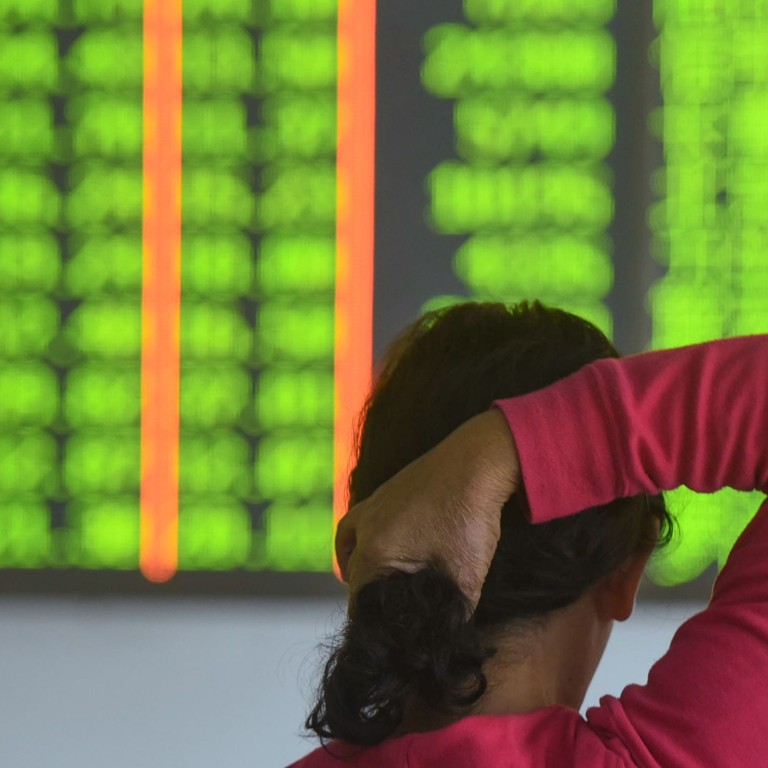
You thought 2018 was bad for China’s stock market? Profit warnings suggest worse may be yet to come
- Preliminary announcements show 390 listed companies are set to report a combined loss of US$49 billion for 2018; total losses could be three times higher than a year earlier
Last year was a dreadful one for mainland Chinese equities as a slowdown in economic growth and the trade war with the US combined to crush market sentiment. The bad news for investors is that the worst may be yet to come.
Preliminary announcements showed that 390 companies listed on China’s bourses are set to report a combined loss to the tune of 330 billion yuan (US$49 billion) for 2018. That means the total loss for the country’s listed firms is on track to be three times greater than a year earlier.
Of those companies, 98 are likely to post losses of more than a billion yuan each, according to China Business News, a daily newspaper focusing on finance.
The profit warnings are certain to exacerbate bearish sentiment in a market whose benchmark indicator shed a quarter of its value last year.
“The fundamentals of the listed firms are not going to improve this year,” said Ivan Li, an asset manager with Loyal Wealth Management. “Those retail investors who hope the market can bottom out soon will feel disappointed because of a slowing economy and worsening company earnings.”
Mainland-listed companies are required to complete and publish their earnings reports for 2018 by April 30 this year.
The Shanghai Composite Index lost a quarter of its value last year after 220 companies, about 6 per cent of listed firms, produced full-year earnings reports for 2017 that were printed in red ink. The total losses amounted to 122 billion yuan.
China’s economy expanded 6.6 per cent in 2018, the slowest pace since 1990. The government is expected to set a growth target for this year of 6.5 per cent.
Retail investors normally would expect a turnaround in the so-called A-share market after a bear run of last year’s magnitude.
In 2008, the Shanghai benchmark dived 65.4 per cent amid the global financial crisis, the biggest annual decline in the market’s history. But the main gauge gained 80 per cent the following year, buoyed by an influx of speculative capital.
Last year’s loss of 24.6 per cent was the second-worst annual performance by the key indicator.
As of January, 42 A-share firms had warned that their profits for 2018 would be more than 66 per cent down from previous estimates due to impairments of goodwill.
Goodwill is an accounting term referring to an intangible asset class arising from one company acquiring another for a premium. As such, goodwill has to be assessed periodically in case of an impairment that could affect the asset value.
Chinese stocks have started the year well: the Shanghai indicator added 1.36 per cent to 2,653.9 on Monday, the first trading day after a weeklong Lunar New Year holiday. It has advanced 6.4 per cent so far this year.
But the recovery is not likely to last, according to said Ding Haifeng, a consultant with Integrity Financial Consulting.
“Weak consumer demand, a sluggish property sector and struggling manufacturing industries are the negative factors that dim the A-share market outlook,” he said. “The recent rally will turn out to be short-lived.”
Among the biggest underachievers, Shenzhen-listed Leshi internet Information & Technology warned of a potential loss of up to 613 million yuan in 2018, following a massive loss of 13.9 billion yuan in 2017.

